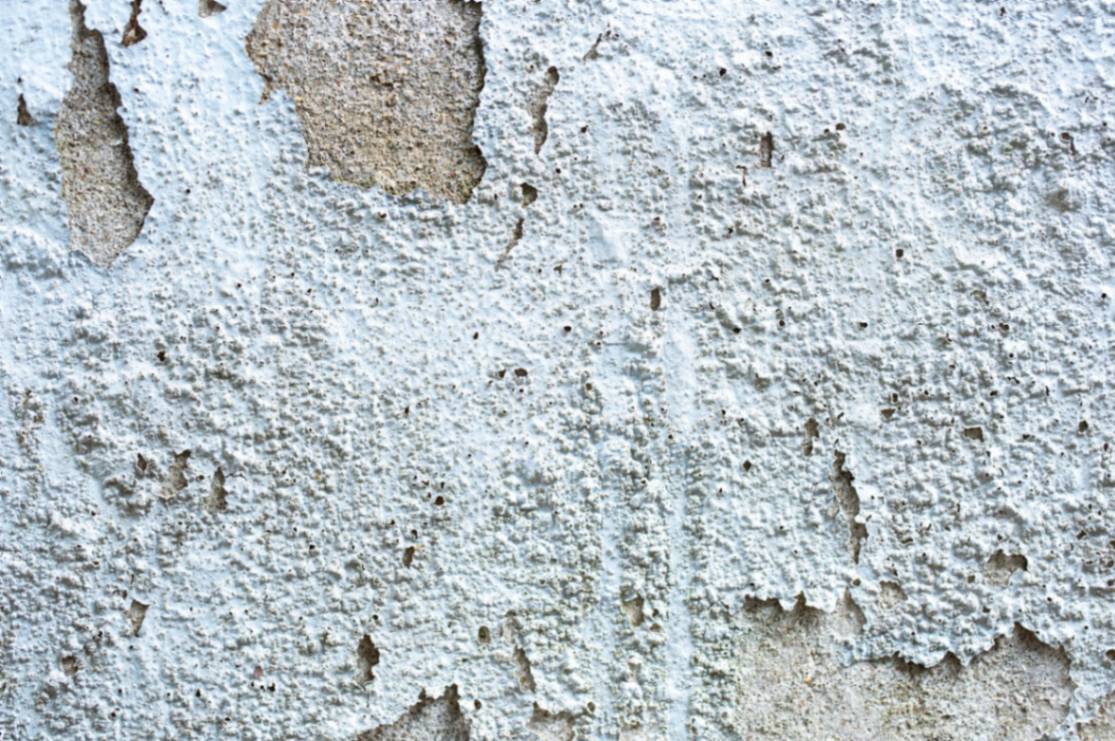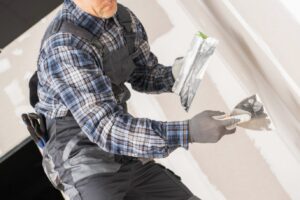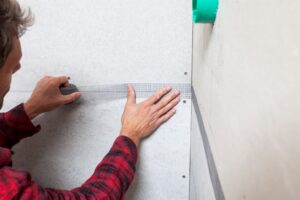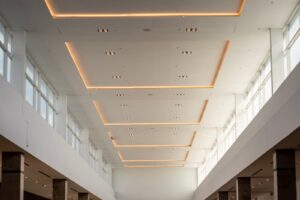Bubbles on a freshly painted wall can ruin all your hard work in no time. Whether you’re a DIY fan or a professional painter, bubbly paint on drywall is both frustrating and unattractive. The good news? You can save yourself time, money, and stress by knowing what causes paint to bubble—and how to stop it from happening.
In this blog, we’ll walk you through the top 5 causes of paint bubbles on drywall, plus easy tips to help you prevent them from showing up in the first place.
1. Moisture: The #1 Troublemaker
Cause
The most common reason paint bubbles appear is because of moisture. Water can sneak into walls from roof leaks, plumbing issues, or even high indoor humidity. When that moisture gets trapped under the paint, it pushes the paint away from the wall, forming bubbles.
Prevention
Before painting, find and fix any moisture problems—like leaks, faulty plumbing, or condensation. Use moisture-resistant drywall in places like bathrooms and kitchens. Always apply a high-quality, moisture-blocking primer. Make sure patched or cleaned walls are completely dry before painting.
2. Poor Surface Prep
Cause
If the wall is dirty, dusty, or greasy, paint won’t stick well. Even small things like fingerprints or leftover joint compound dust can mess with paint adhesion, causing bubbles or peeling later on.
Prevention
Always start with a clean surface. Wash the walls using mild soap or TSP, rinse well, and let them dry fully. Sand patched spots until smooth, and use a microfiber cloth or vacuum to remove dust before painting. A clean surface = a smooth paint job.
3. Painting Over Unprimed or Unsealed Drywall
Cause
Drywall is naturally porous. If you don’t prime or seal it properly, the paint gets absorbed unevenly. This can cause bubbles, patchy color, or even peeling—especially with brand-new drywall.
Prevention
Use a PVA primer or another drywall-specific primer to seal the surface. This helps the paint go on evenly and stick better. Use professional-grade materials and apply two coats of primer in problem areas like kitchens, basements, and bathrooms.
4. Using Too Much Paint or Painting in Bad Conditions
Cause
Thick coats of paint, especially in hot or humid conditions, can dry unevenly or trap air, leading to bubbles. Painting in direct sunlight or on hot surfaces can also cause the paint to dry too fast and not bond properly.
Prevention
Apply thin, even coats instead of one thick layer. Stick to temperatures between 50°F and 85°F, and avoid painting on super hot or humid days. Painting in Boerne Texas has very different environmental conditions than painting in Calgary, or here in Victoria BC. Always read the paint can for the best temperature and drying time guidelines.
5. Incompatible Paint Layers
Cause
Sometimes bubbles form when the new paint doesn’t stick to the old paint layer. This often happens if you mix paint types incorrectly—like applying latex over oil-based paint—without the right prep work.
Prevention
To check the paint type on your wall, rub a small spot with rubbing alcohol and a cotton ball. If paint comes off, it’s latex; if not, it’s likely oil-based. For glossy or oil-based surfaces, use a bonding primer before painting. If you can, use paints from the same brand to avoid compatibility issues.
Bonus Tips to Avoid Bubbles
Here are a few extra tricks to keep your walls looking flawless:
-
Use good tools: High-quality brushes and rollers apply paint more evenly and reduce air bubbles.
-
Don’t overwork the paint: Once paint starts drying, avoid going over it again—this can create texture issues or bubbles.
-
Let it cure: Paint might feel dry to the touch, but it still needs time to fully cure. Wait at least two weeks before cleaning or scrubbing painted walls.
How to Fix Bubbling Paint
If bubbles have already popped up, don’t panic! Here’s how to fix them:
-
Find the cause: Check for moisture, poor adhesion, or incompatible layers.
-
Scrape off the bubbled paint: Use a putty knife to carefully remove it.
-
Sand the area: Smooth out the spot and remove loose bits.
-
Prime and repaint: Apply a stain-blocking primer, then repaint using thin, even layers under proper conditions.
Final Thoughts
At Drywall Medic, we believe prevention is the best solution when it comes to paint bubbles. Most bubbling issues come from moisture, rushing the job, mixing paint types, or skipping prep steps. By taking the time to inspect, clean, prime, and paint properly, you’ll get a smooth, long-lasting finish every time.
Remember, beautiful walls start below the surface—so whether you’re tackling the project yourself or calling in the pros, make sure the job is done right.
For expert help, quality craftsmanship, and reliable solutions, reach out to Drywall Medic:
Victoria, BC:
#136 – 2936 Amy Rd, Victoria, BC, V9B 0B2
📞 250-880-8849
Vancouver, BC:
6894 192 St, Surrey, BC V4N 0B7
📞 604-913-4656




